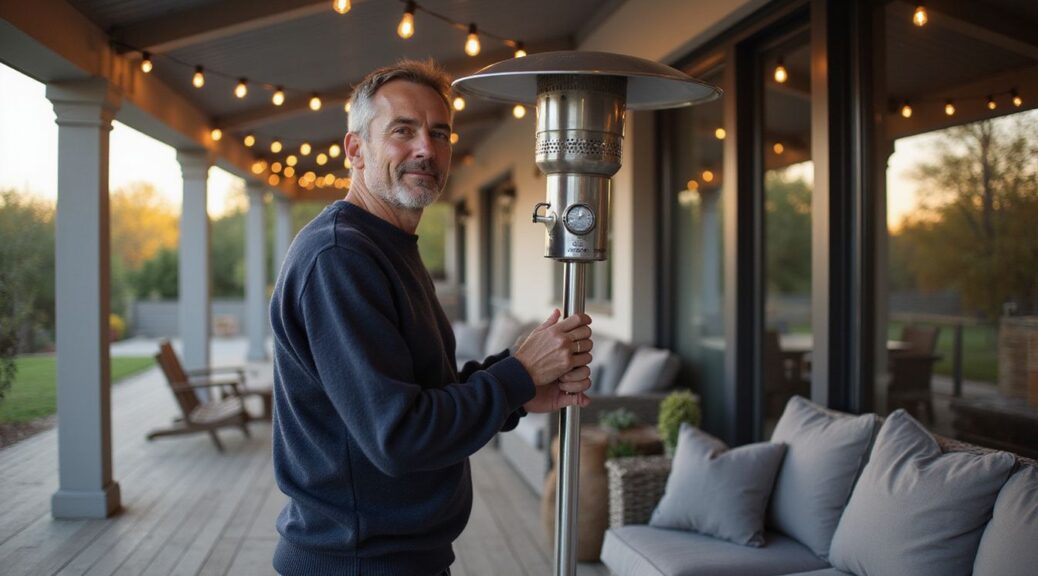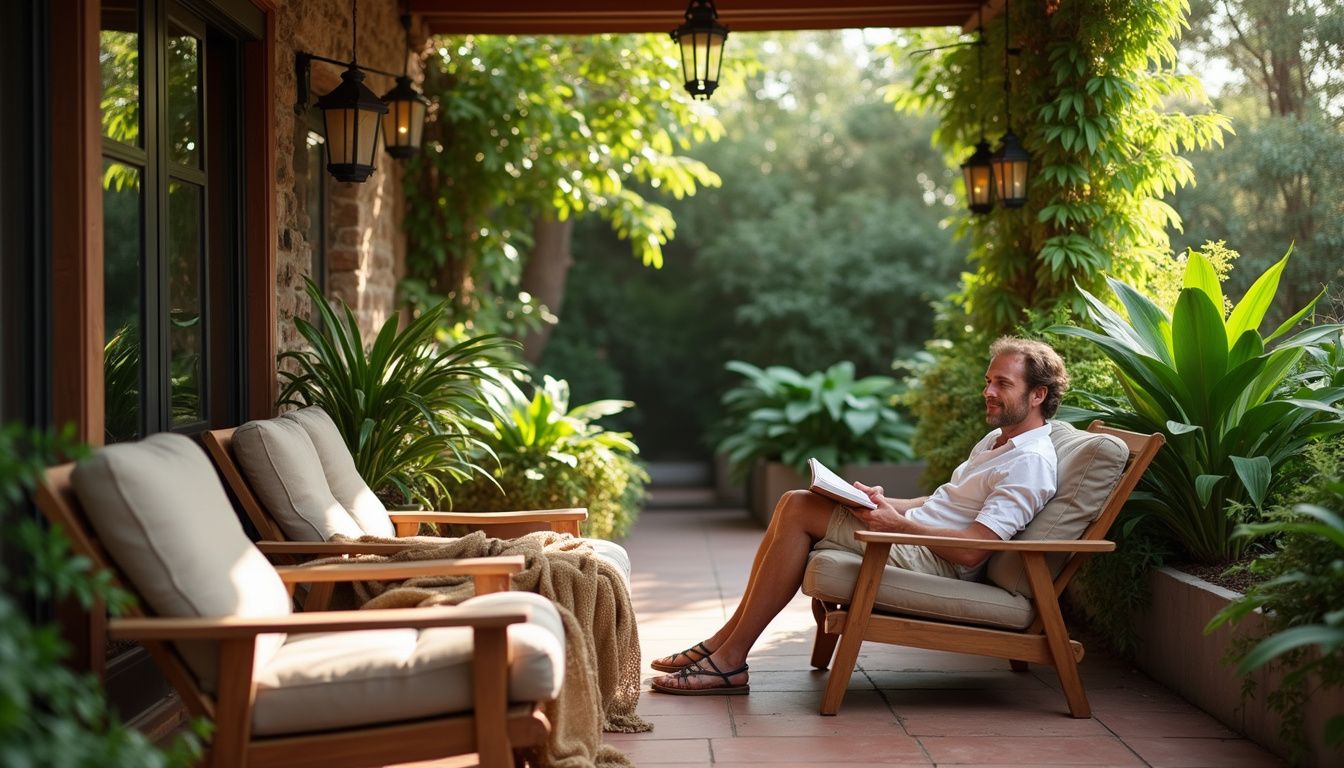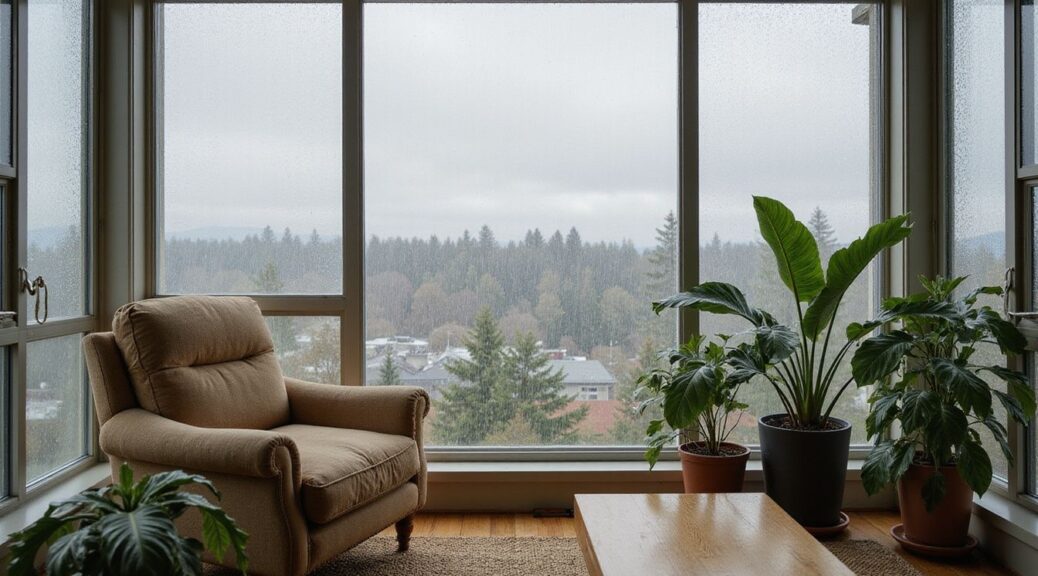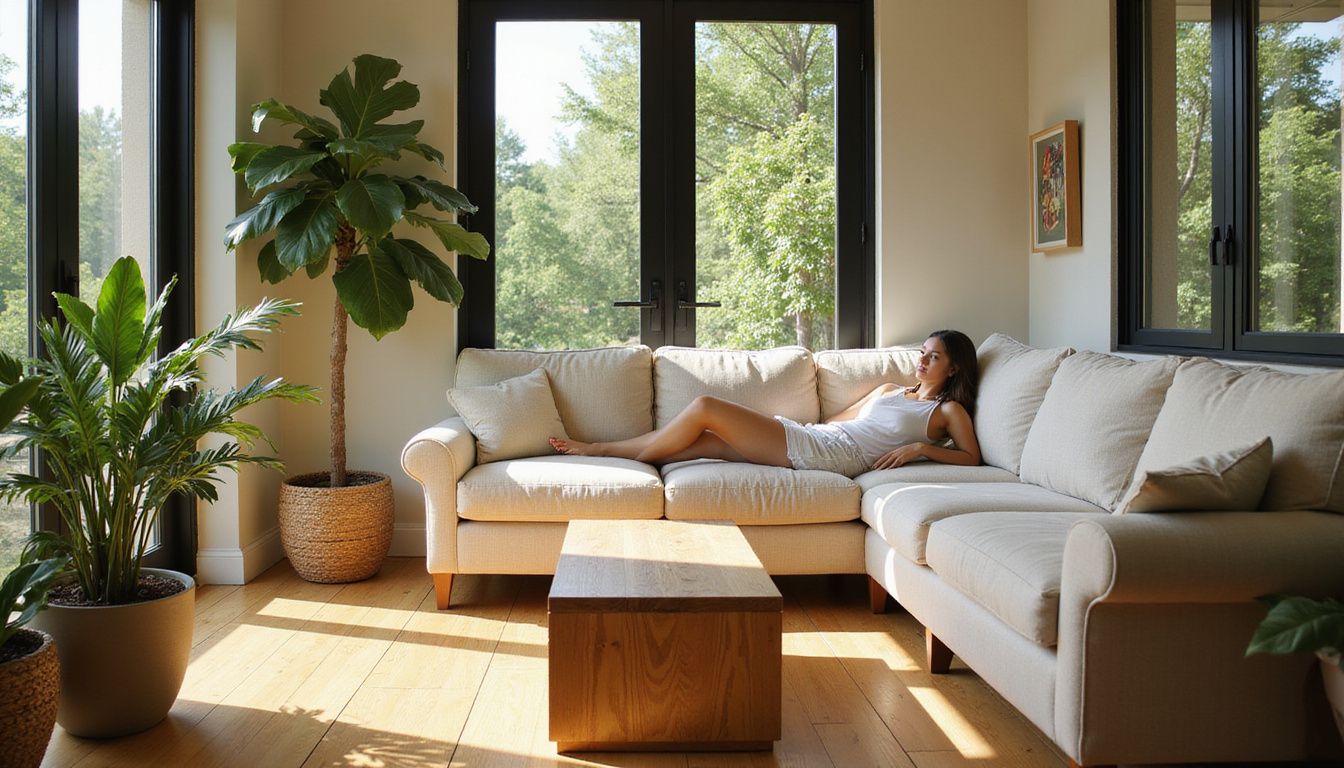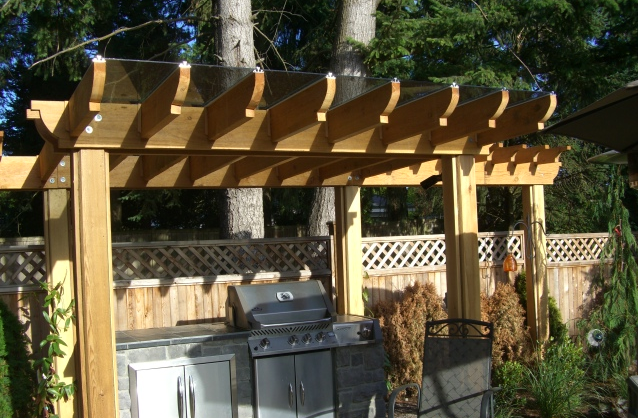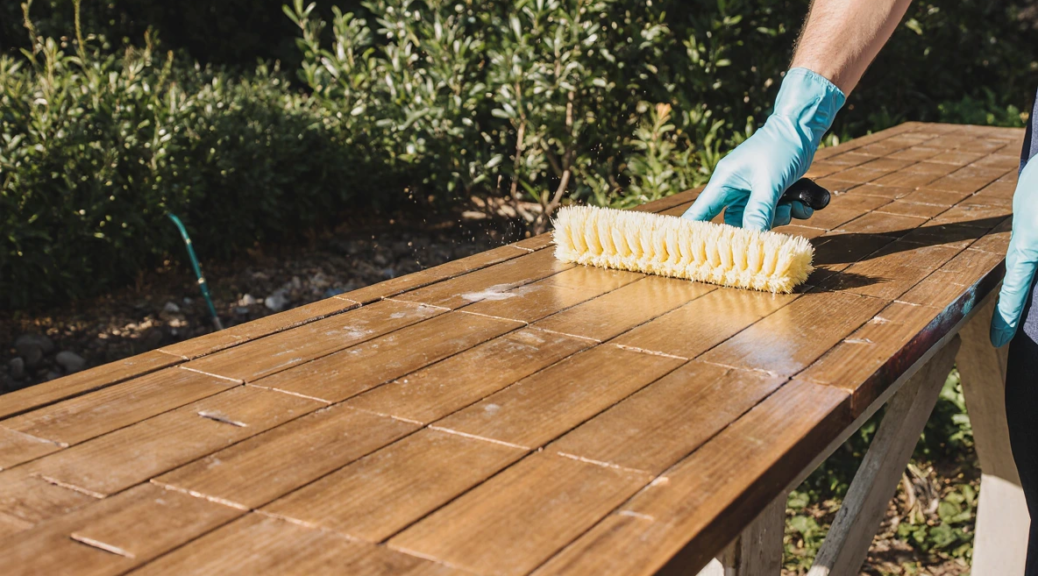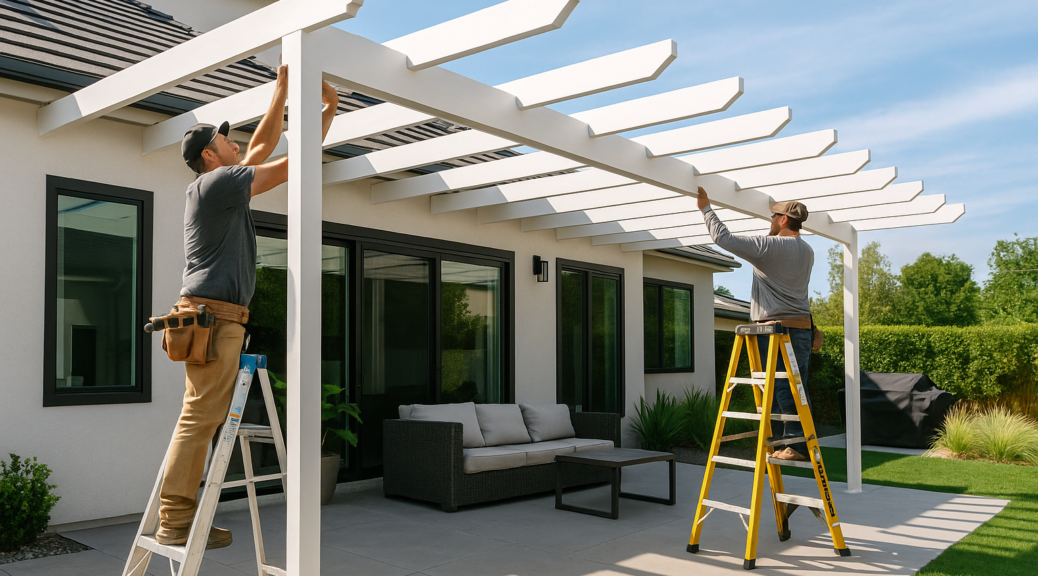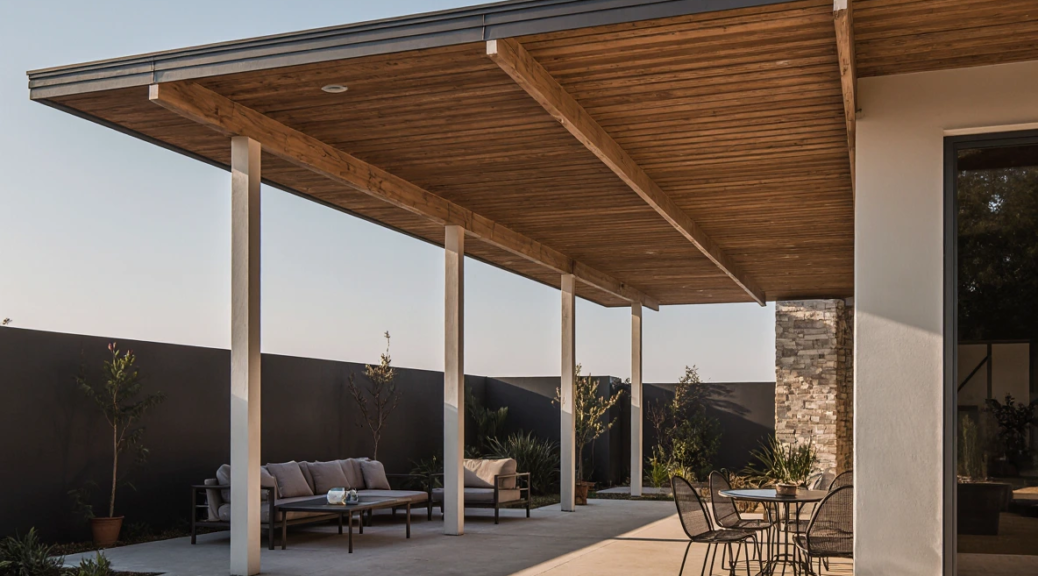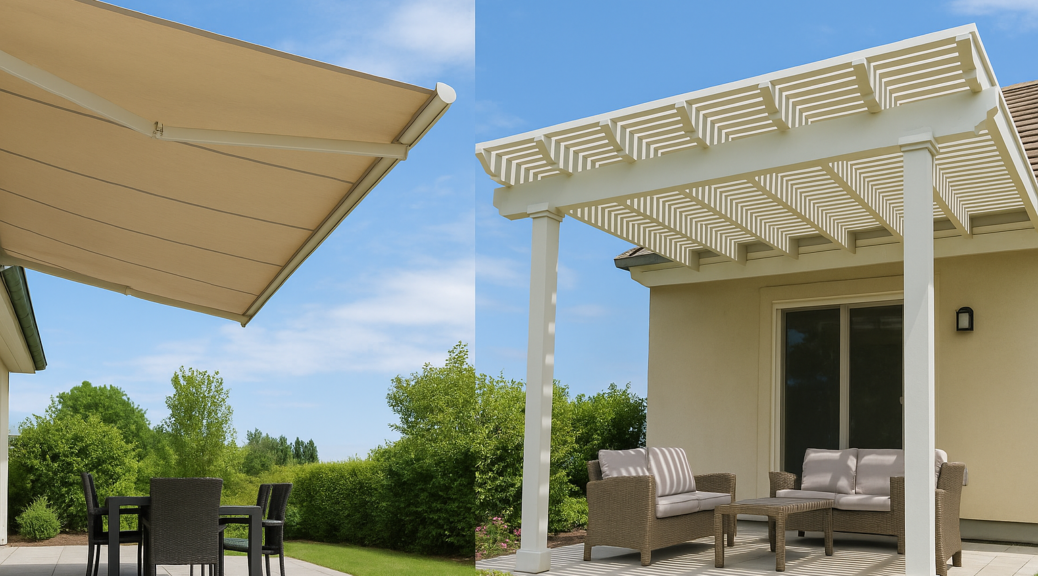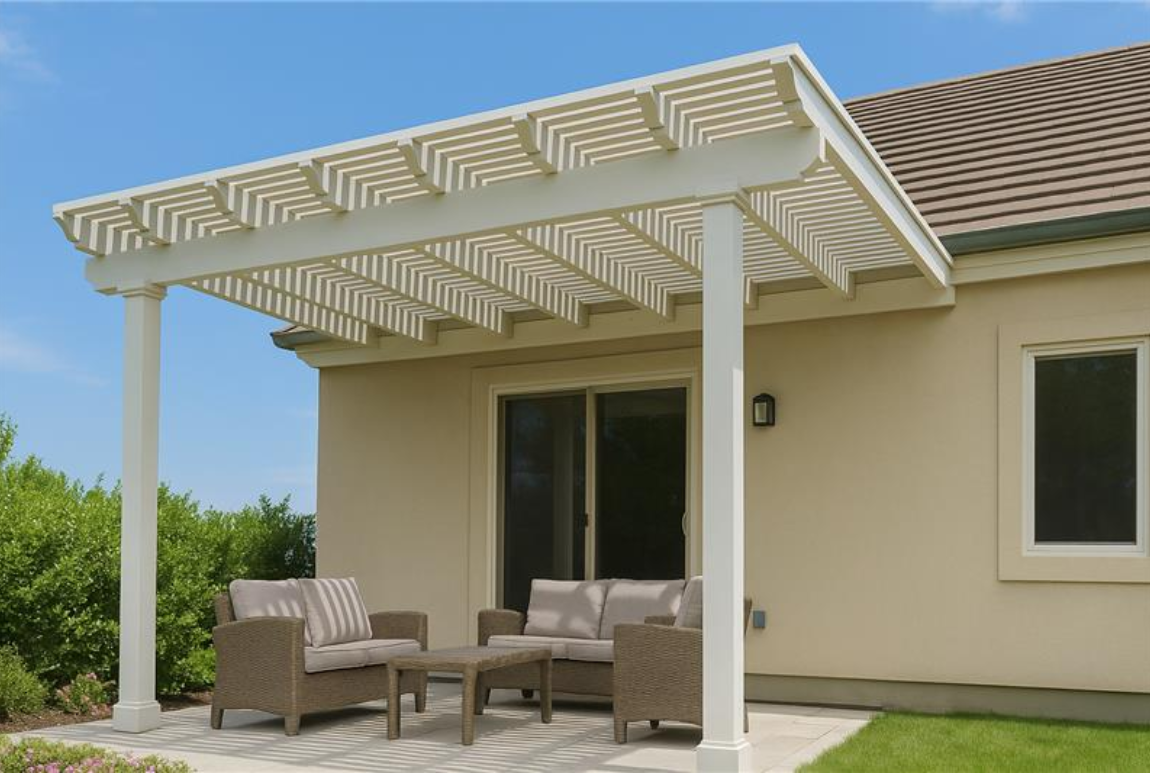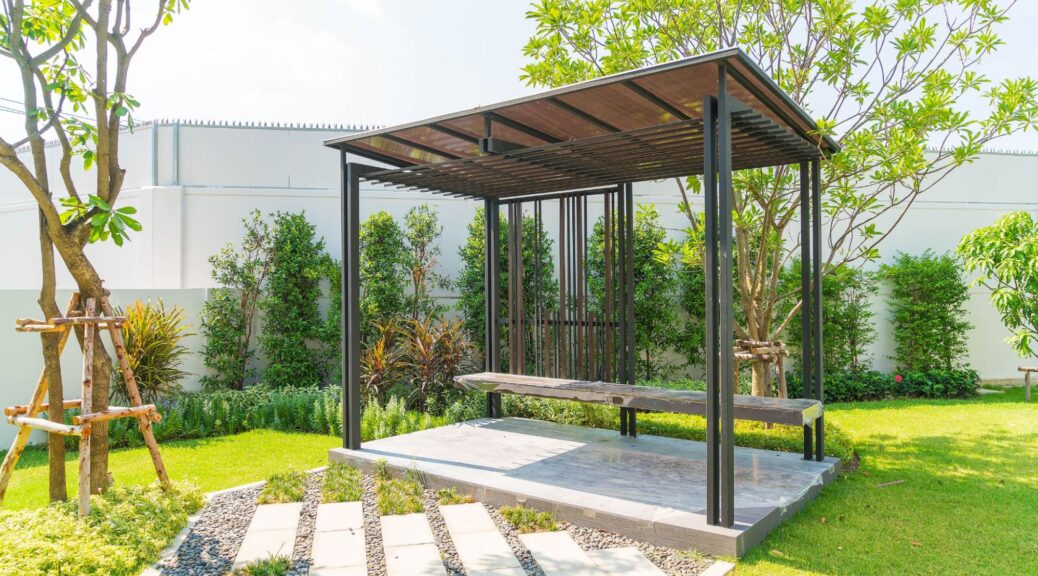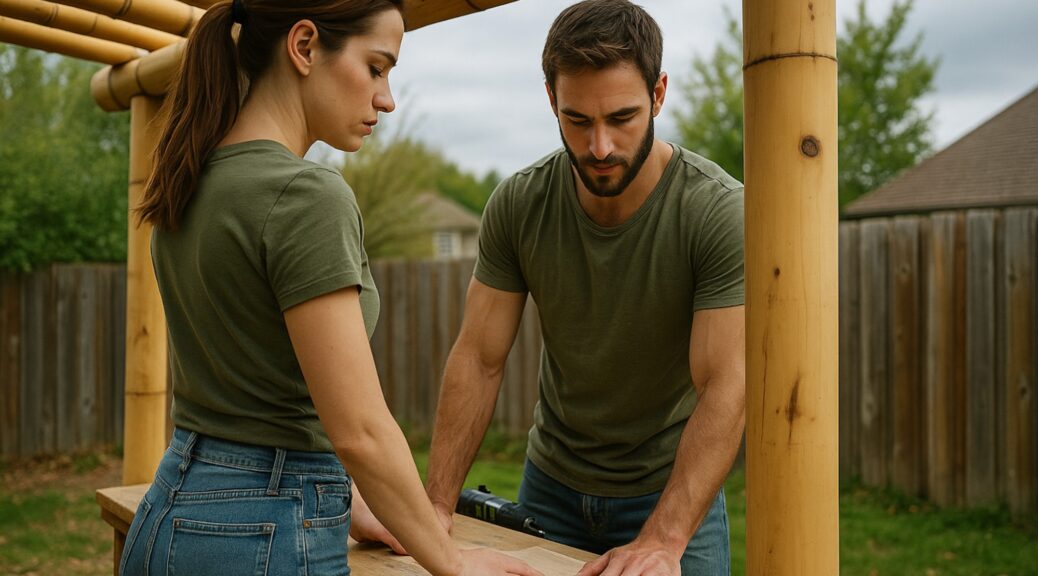Do you ever feel too hot or cold on your patio? Many patios stay comfortable longer with patio covers, making outdoor spaces usable all year. In this blog, you will learn how heating, fans, and the right accessories can turn your covered patio into a cosy spot no matter the weather.
Key Takeaways
- Covered patios shield you from rain, snow, sun, and wind, making outdoor spaces usable in all seasons in Canada.
- Heating options like infrared, electric, and propane heaters offer quick, safe, and energy-efficient warmth during colder months.
- Cooling solutions such as ceiling fans, portable fans, and retractable screens boost airflow and comfort on hot days.
- Accessories like LED lighting create a cosy mood, while furniture covers protect against weather damage and keep furniture clean.
- Using heating, fans, and accessories with covered patios can save energy, lower bills, and help you enjoy your patio year-round.
Benefits of Covered Patios for Year-Round Comfort
Covered patios offer great weather protection. They shield you from rain, snow, and harsh sun. Thanks to their insulation features, they help keep your space warm in winter and cool in summer. This means you can enjoy your patio no matter the season!
How do covered patios protect you from weather elements?
Big slop covers and insulation board roof covers keep you dry on rainy days. Strong peak shape covers stop snow from piling up, so the weight does not damage your patio. General covers block harsh sunlight, making hot afternoons more comfortable for family and friends.
Even a car park cover shields you against sudden winds and flying debris, giving peace of mind during storms.
Some designs also help trap warmth in winter while still letting fresh air pass through. With the right cover choice, each season brings a new way to enjoy your outdoor space safely.
How can covered patios improve energy efficiency?
Covered patios help block direct sunlight, which keeps your home cooler in the summer. Less heat enters through windows and doors, so you use your air conditioner less. Energy bills drop because fans or cooling systems do not have to work as hard.
In colder months, a covered patio offers protection from wind and rain. This buffer helps keep warmth inside your house. Your heating system does not run as often or for as long. With less energy used year-round, both the environment and your wallet win!
How do covered patios increase outdoor usability in all seasons?
Improving energy efficiency also brings a boost in outdoor living. With a roof overhead, a peak shaped patio blocks rain, snow, and harsh sunlight. Families can barbecue in July, sip hot cocoa in December, and host parties during spring rain.
Even in windy autumn weather, a covered space shelters outdoor furniture and people alike.
Fans, heaters, and LED lights let you change the temperature and mood outside at any time of year. You can relax with a book or watch your kids play, no matter the forecast. A covered patio gives every season in Canada a fresh reason to step outdoors and enjoy your space longer.
Heating Solutions for Covered Patios
Heating solutions can transform your covered patio into a cosy retreat. Infrared heaters warm up spaces quickly and efficiently, while propane and electric options provide flexibility for all your heating needs.
What are the advantages of infrared patio heaters?
Infrared patio heaters warm people and objects directly, instead of heating the air around them. You feel heat in seconds, even if cool winds blow through your covered patio. These heaters use less energy than many traditional options because they do not waste power warming empty spaces.
They also operate quietly and produce zero emissions on electric models, making them ideal for both comfort and clean air.
Many infrared heaters have slim designs, so they do not take up much space and can fit neatly on walls or ceilings. You can enjoy steady warmth without bright lights or loud fans disrupting your night outside with friends or family.
With adjustable heat settings, it is simple to control how cosy your outdoor area feels on chilly evenings or crisp mornings.
What propane and electric heating options are available for patios?
Patios can stay warm with the right heating options. You can choose between propane and electric heaters to enjoy the outdoors all year long.
- Propane patio heaters offer great heat for large outdoor spaces. They can reach high temperatures quickly and work well for gatherings.
- Portable propane heaters are easy to move around. You can set them up wherever needed, and they usually run for several hours on a single tank.
- Electric patio heaters come in different styles, like wall-mounted or freestanding models. They provide consistent warmth without requiring much setup.
- Some electric heaters use infrared technology, which warms people directly instead of the air around them. This makes them very efficient in any weather.
- Electric patio heaters often have adjustable settings for temperature control. You can find a level that works best for you at any time.
- Both propane and electric options are available in sleek designs that fit your patio style easily. Choose a look that matches your vibe while staying cosy.
- Many electric models include safety features like automatic shut-off systems. These features help ensure peace of mind when enjoying your outdoor space.
With these heating solutions, you can keep your covered patio comfortable regardless of the season!
Cooling Solutions for Covered Patios
Cooling a covered patio makes hot days enjoyable. Ceiling fans and portable fans keep the air fresh and breezy, so you stay comfortable whilst relaxing outside.
How do ceiling fans and portable fans enhance patio cooling?
Ceiling fans and portable fans are great for cooling patios. They create a gentle breeze that helps lower the temperature. Air circulation makes hot days feel more comfortable.
Ceiling fans can be mounted above, while portable fans are easy to move around. Both options help keep you cool by increasing airflow. This is especially nice during summer barbecues or pool parties!
How do retractable screens improve ventilation on patios?
Retractable screens allow fresh air to flow through your patio. They keep insects out while letting in a nice breeze. You can control the amount of air that comes in by opening or closing the screens.
This is especially helpful on warm days when you want to enjoy the outdoors without overheating.
These screens also help reduce humidity levels on your patio. Good ventilation prevents stuffiness, making your space more comfortable. With retractable screens, you can relax outside and feel cool, even during hot weather.
Accessories to Enhance Comfort
Accessories can make your covered patio truly special. LED lights set the mood for evening gatherings, while outdoor furniture covers help keep everything safe and clean.
How can LED lighting create ambiance on a covered patio?
LED lighting adds charm and warmth to a covered patio. It creates a cosy atmosphere for gatherings or quiet evenings. Soft, adjustable lights can set the mood for fun with friends or relaxation alone.
Different colours of LED lights bring various feels. You can choose bright whites for lively nights or warm yellows for calm moments. They are energy-efficient too, which is good for your wallet and the planet.
With so many options available, it’s easy to express your style through light on your patio space.
Why use outdoor furniture covers for durability?
Outdoor furniture covers shield your chairs and tables from rain, snow, and sun. They help prevent rust, mold, and fading. This protection keeps your furniture looking new for longer.
Using these covers can save you money too. You won’t need to replace worn-out or damaged pieces as often. Durable covers make cleaning easy because they keep dirt off surfaces. Enjoy a fresh and tidy patio all year round!
Conclusion
Covered patios offer great comfort all year. With heating and cooling options, they keep you cosy in winter and cool in summer. Fun accessories like lights can make your space inviting too.
Enjoy every season outside with the right setup for your patio!
FAQs
1. How do heating systems make covered patios comfortable all year?
Patio heaters keep outdoor spaces warm during cold months. They help extend patio use beyond summer, so you can relax or entertain even when temperatures drop.
2. What role do fans play in covered patio comfort?
Fans move air to cool the area under your patio cover. They help reduce humidity and keep mosquitoes away, making your outdoor space more comfortable in hot weather.
3. Are there accessories that improve comfort on covered patios?
Yes, accessories like weatherproof curtains, adjustable lighting, and outdoor rugs add comfort and style. These items also help block wind and create a cosy atmosphere.
4. Can I use both heating and fans together on my patio?
Yes, using heaters and fans together gives you control over temperature in every season. Heaters warm the space in winter, while fans cool it in summer, letting you enjoy your patio year-round.
